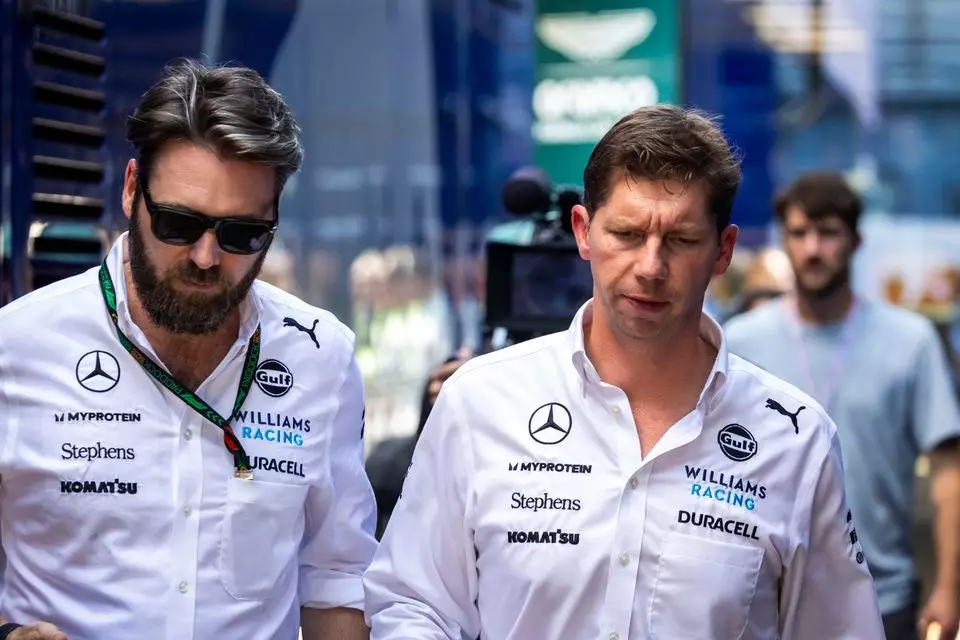As the 2025 Formula 1 season approaches, concerns loom over the future of the Williams Racing team. Principal James Vowles has openly acknowledged that the upcoming season will present significant challenges for the British team, predominantly as it prepares for the substantial regulatory changes set to take effect in 2026. The anticipated modifications to car specifications—including reduced dimensions, lower weight, and simplified aerodynamics—represent a pivotal moment in the F1 landscape, and Vowles recognizes the need for the team to recalibrate its focus away from immediate competitiveness.
Williams has not enjoyed a successful spell in recent years, having last finished in the top five of a race in 2017, with the exception of a disputed outcome in the 2021 Belgian Grand Prix. Historically held back by financial limitations, the team fell behind its rivals. However, with new ownership from Dorilton Capital, Williams has begun to retrieve a sense of stability, addressing both performance and infrastructural deficits. Vowles made it clear that the team’s strategies are now aimed at leveraging this upcoming transitional phase; prioritizing investment for an anticipated leap in the following season rather than competing in 2025.
In Vowles’s candid dialogue, he alludes to a necessary compromise for the 2025 season, suggesting that stakeholders, including drivers Alex Albon and Carlos Sainz, are well aware of the hurdles ahead. He conveyed a willingness to potentially regress in terms of performance as a deliberate strategy to cement foundations for 2026, stating, “It’s going to be a hard year.” He highlights that embracing a bit of regression can reflect a mature understanding of team development rates and projections.
Underlining the importance of long-term thinking, Vowles is not concerned with short-term results if they serve a greater purpose. This approach exemplifies a critical transition in how racing teams adjust their strategies to not only navigate immediate competition but also to align with future regulations that will reshape the field. There is an inherent risk in placing faith in a vision that defers gratification, and yet Vowles’s comfort with this concept is commendable.
Reflecting on a recent season that was anything but straightforward, Vowles acknowledged that Williams’s seventh-place finish in the constructors’ championship was hardly a testament to superior performance. Gleaning insights from the dynamics of race strategy and car performance, he assessed that the team’s achievements were influenced by factors beyond their control, underscoring a reliance on strategic decision-making rather than sheer speed. Notably, the early struggles of the 2024 campaign revealed Williams’s ongoing issues with car weight, but improvements in this area subsequently allowed the team to regain some competitive stature.
The renewed performance was particularly highlighted in races like Monza and Baku, where both Albon and Franco Colapinto showcased the potential of a more balanced and competitive FW46 chassis. This promising return to form positions the team as cautiously optimistic, though Vowles emphasizes that consistency remains a key concern going forward.
Looking ahead, Vowles has adopted a proactive stance, advocating a trial-and-error methodology to embrace learning in the face of forthcoming technical adjustments. He expressed a desire to pursue significant advancements instead of narrowly focusing on “marginal gains,” a philosophy often echoed in the fast-paced world of Formula 1. Such a mindset signifies a bold readiness to experiment, even if it entails encountering setbacks—a perspective that speaks volumes about Williams’s ambition and the confidence in its evolving capabilities.
Vowles’s acknowledgment of future missteps—“I think we’re going to trip ourselves up”—captures an essence of realism often absent in high-stakes environments. The understanding that growth often comes with challenges and failures is vital, especially as the organization gears itself for an unprecedented surge of change in 2026.
As Williams Racing navigates this pivotal juncture, the next year promises a blend of anticipatory efforts and reflective enthusiasm. There is a palpable complexity wrapped around the decision to potentially sacrifice competitiveness for future gains, yet such a scenario is representative of agility in the ever-evolving world of Formula 1. The journey towards a brighter future is laden with challenges, yet if approached with open minds and strategic foresight, Williams may position itself not just to survive but to thrive in a new era of racing. Amidst the turbulence, the echoes of Vowles’s vision stand out: the challenges of today are but stepping stones to the successes of tomorrow.


Leave a Reply